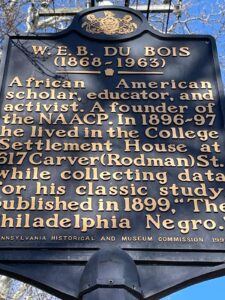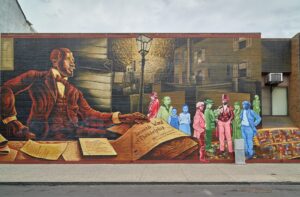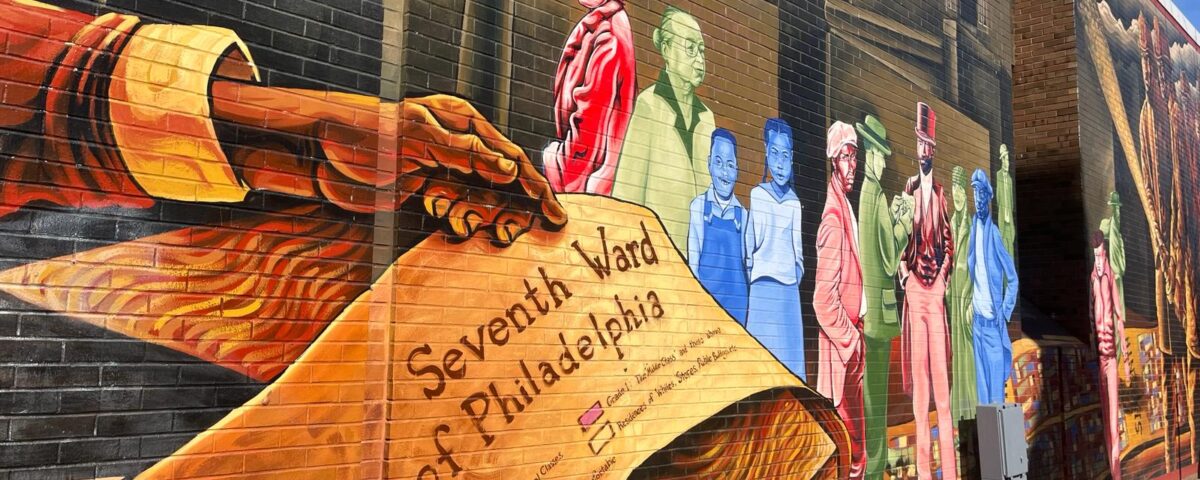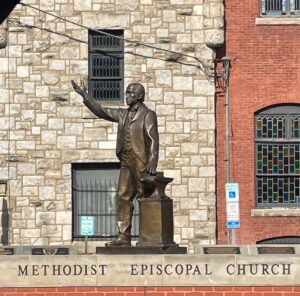On a cold but sunny February Saturday, CISVers bundled up and gathered for a walking tour of the 7th Ward of Philadelphia, which spans from Sixth Street to 23rd Street and from Spruce Street to South Street. Courtesy of the 7th Ward Tribute Project, the tour shed light on the history of the area, once the epicenter of black and immigrant communities in the 19th century, and the enduring legacy of influential figures such as Octavius Catto, Fanny Jackson Coppin, and W.E.B. Du Bois.
Statue of Richard Allen, founder of the African Methodist Episcopal (AME) church.
The tour started at Mother Bethel AME Church, the oldest African Methodist Episcopal congregation in the nation. Just outside the church is the statue of its founder, Richard Allen, with his left hand resting on a Bible atop an anvil. This symbolic depiction reflects the humble beginning of the church: before the acquisition of the current site in 1794, a blacksmith’s shop served as its first building.
Walking towards 6th and Rodman, we were greeted with a blue historical marker about W.E.B Du Bois, known for his 1899 study “The Philadelphia Negro”. During this era, sentiments among Philadelphia’s white leadership often attributed the prevalence of poverty and crime within the 7th Ward to its substantial population of African Americans. When Du Bois was invited to the University of Pennsylvania to conduct his classic study, he was invited to investigate this perceived “problem” in black communities. While obvious today, it was a groundbreaking revelation when Du Bois concluded that racism and segregation, not the residents themselves, were the root cause of the problem, challenging the prevailing misconception of the time.

Historical marker about W.E.B Du Bois and his research at the Ward. |

Mural honoring the legacy of W.E.B Du Bois. |
Marked by a dramatic racial and economic transformation, the neighborhood saw its black residents migrating to other parts of the city in the mid 20th century. Now, it is no longer named the 7th Ward, and the filth and poverty once associated with it are replaced by upscale boutiques, chic restaurants, and modern apartments. Walking along these streets, one encounters blue historical markers and murals adorning the surroundings – poignant reminders of the Black Philadelphia life that once imbued this historic neighborhood.
Learning about the 7th ward has certainly left us feeling more connected to the history of the city. What do you know about the history of your own neighborhood?


